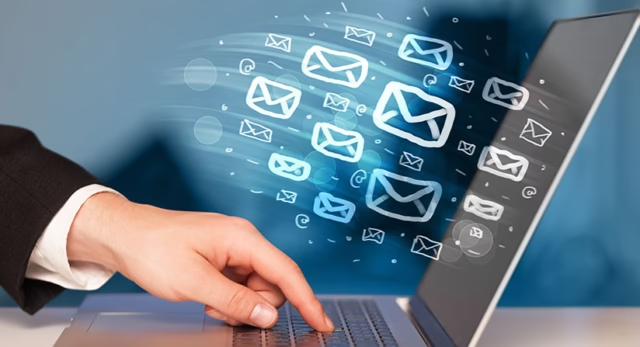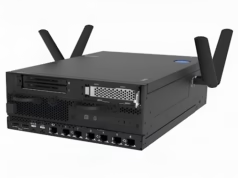Handling work emails can be stressful. Every day, hundreds of messages arrive in your inbox. Some are urgent, others are routine, and many are unnecessary. Without a proper system, emails pile up, causing stress and lost time. Effective email management is not just about reading quickly. It’s about organizing, prioritizing, and responding efficiently. When you manage your emails well, you reduce distractions, improve productivity, and protect sensitive information. This guide will cover practical methods to handle emails in a structured way. You will learn how to sort, respond, and safeguard your messages. We will also discuss tools and techniques that can help keep your inbox under control. By following these steps, you can avoid missed deadlines, lost messages, and wasted time. These strategies will work whether you manage a small inbox or a high-volume work account.
Set Clear Email Priorities
The first step in managing emails efficiently is knowing which messages matter most. Not every email needs an immediate response. Identify urgent emails that require action within hours. Less critical messages can be scheduled for later review. Some emails are purely informational and don’t need replies. Flag emails by importance or create separate folders for urgent, important, and low-priority messages. This helps you focus on tasks that actually need your attention. For example, a client request might be urgent, while an internal newsletter can wait. Setting priorities prevents wasted time on trivial emails.
Use Folders and Labels
Organizing emails into folders and labels makes it easier to find them later. You can categorize messages by project, client, or department. For example, create a folder for invoices, one for client communication, and another for internal updates. Some email services allow labels or tags, which can be used instead of folders. Labels are flexible because a single email can have multiple tags. When you organize messages properly, you don’t waste time searching through hundreds of emails. This simple habit improves efficiency and reduces stress.
Unsubscribe from Unnecessary Emails
Many work inboxes are cluttered with newsletters, promotions, and updates that are not relevant. Take time to unsubscribe from emails that don’t serve your job purpose. Most emails have an unsubscribe link at the bottom. Removing irrelevant messages reduces clutter and distractions. You can also use email filters to automatically move newsletters or promotional emails into a separate folder for later review. By cutting down unnecessary emails, your inbox becomes cleaner, and you can focus on important tasks.
Set a Schedule for Checking Emails
Checking emails constantly disrupts workflow. Each notification can break your focus. Instead, set specific times to review emails. For example, check emails first thing in the morning, after lunch, and before finishing work. Stick to the schedule unless an urgent message comes in. This method prevents constant interruptions and helps you dedicate focused time to important projects. Over time, scheduling email review reduces stress and increases productivity.
Respond Quickly to Simple Emails
Not all emails require long replies. Short, simple responses can be handled immediately. For example, if someone asks for a document you can send quickly, do it at once. Responding quickly to small tasks prevents them from piling up. This also gives you a sense of control over your inbox. For longer, complex emails, you can flag them to reply later when you have more time.
Use Email Templates
If you send similar emails often, templates can save time. Create standard replies for common queries or requests. For example, you might have a template for meeting confirmations, invoice submissions, or client follow-ups. Using templates reduces repetitive typing and ensures consistency. Make minor adjustments to each email to personalize it without starting from scratch. Templates help handle routine emails efficiently.
Archive and Delete Regularly
Old emails can slow down your inbox and make searching harder. Regularly archive messages you might need in the future and delete those that are irrelevant. Archiving keeps your inbox clean but still allows access to past emails when needed. Deleting unnecessary emails frees storage space and reduces clutter. Maintaining a tidy inbox makes it easier to manage new messages.
Use Filters and Rules
Email filters and rules automatically sort incoming messages based on set criteria. For example, emails from a specific client can go to a dedicated folder automatically. Messages with certain keywords can be flagged or labeled. Filters reduce manual sorting and keep your inbox organized. This automation saves time and ensures important emails are not overlooked.
Be Clear and Concise in Responses
When replying to emails, keep your messages clear and short. Avoid long paragraphs or unnecessary information. Focus on the main point and required actions. For example, instead of writing multiple sentences, use bullet points or numbered steps. Clear communication reduces follow-up questions and speeds up the email process. Being concise helps you manage emails more efficiently and makes it easier for recipients to understand your message.
Protect Your Inbox from Malware
Email is a common source of malware and cyber threats. Avoid clicking on suspicious links or downloading unknown attachments. Use antivirus software and keep your system updated. Do not open emails from unknown senders, and verify unusual requests before acting. Being cautious prevents malware infections that could disrupt work and compromise sensitive information. Good email management also includes security practices.
Use the Search Function Effectively
Instead of manually browsing through emails, use the search function to find messages quickly. Most email services have advanced search features that allow filtering by sender, subject, or date. Learning how to use search efficiently saves time, especially in large inboxes. You can locate past emails or important attachments without wasting minutes scrolling.
Limit CCs and Reply-All
Overusing CC and reply-all increases unnecessary email traffic. Only include people who need to see the message. Limiting unnecessary recipients reduces clutter in your inbox and helps others manage theirs. When replying, check if everyone on the list needs your response. Minimizing CCs improves communication efficiency and prevents inbox overload.
Keep Emails Organized by Thread
Many email services group messages into threads or conversations. This makes it easier to follow the discussion without losing context. Avoid breaking threads with multiple unrelated emails. Keeping related messages together simplifies tracking progress, deadlines, and feedback. Thread organization reduces confusion and ensures you respond appropriately.
Set Up Email Notifications Wisely
Constant notifications can be distracting. Configure notifications only for urgent or important emails. Turn off alerts for newsletters, promotions, or low-priority messages. This prevents frequent interruptions and allows you to focus on work tasks. Smart notification management helps you stay productive while not missing critical messages.
Use Shortcuts and Keyboard Commands
Email services provide shortcuts for faster navigation. Learn basic commands like composing a new message, archiving, or marking emails as read. Using shortcuts reduces time spent clicking through menus. Small time savings add up, especially when handling large volumes of emails. Efficiency improves when you rely on shortcuts instead of manual actions.
Regularly Review Sent Emails
Occasionally review your sent emails to track ongoing tasks or pending requests. This helps ensure that nothing falls through the cracks. You can follow up on messages that did not receive a response. Monitoring sent emails is part of maintaining a well-organized inbox and staying on top of work priorities.
Delegate When Possible
If you manage shared email accounts or team emails, delegate tasks where appropriate. Assign emails to team members who can handle them better. Delegation prevents backlog and ensures emails are addressed by the right person. This practice is essential for team efficiency and reduces pressure on one individual.
Minimize Personal Emails During Work Hours
Personal emails can distract from work priorities. Limit checking personal messages during office hours. Schedule breaks to handle personal communications without affecting work efficiency. Keeping personal and work emails separate reduces distractions and helps maintain focus.
Regularly Update Email Security Settings
Ensure your email account has strong passwords and two-factor authentication. Review security settings periodically. Update recovery information and monitor for unauthorized access. Good security practices prevent email breaches that could lead to data loss or malware infections.
Conclusion
Managing work emails efficiently requires consistent effort and organization. By setting priorities, using folders, templates, and filters, you can reduce clutter and save time. Avoid unnecessary emails, limit notifications, and respond concisely to keep your inbox manageable. Protecting your email from malware and keeping security settings updated is equally important. Scheduling email reviews and delegating when necessary helps maintain control over high-volume inboxes. Using shortcuts, archiving regularly, and leveraging email tools improves productivity. Following these practices creates a structured workflow, reduces stress, and ensures timely communication. Efficient email management is not just about speed but clarity, organization, and security. Applying these steps can make handling work emails straightforward and less overwhelming.
click here to visit website for more interesting collection of articles







